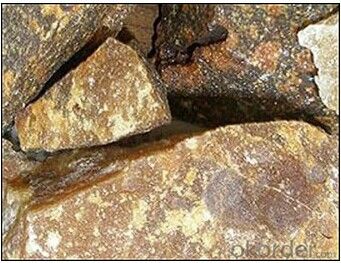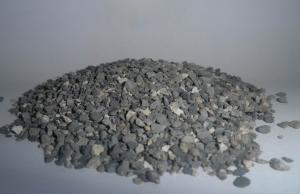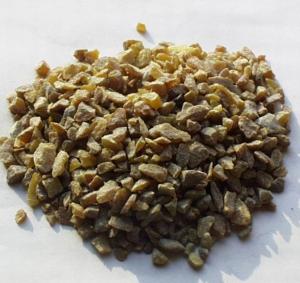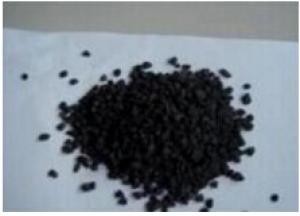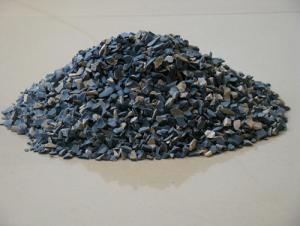Raw Materials for Refractory - Electrically Fused Magnesia Product
- Loading Port:
- China Main Port
- Payment Terms:
- TT OR LC
- Min Order Qty:
- -
- Supply Capability:
- -
OKorder Service Pledge
OKorder Financial Service
You Might Also Like
Electrically fused magnesia is made by smelting finely sorted special grade-A raw magnesite in an electric arc furnace. Its features are high purity, big crystalline size, dense structure, good corrosion resistance, and thermal shock resistance.
| ||||||||||||||||||||||||||||||||
| | ||||||||||||||||||||||||||||||||
| | ||||||||||||||||||||||||||||||||
It is produced by the melting and cooling of magnesite in electric arc furnace.This product has the characteristic of tough and big crystal grain,good chemical stability,strong slag resistance and high strength and also high temperature.It is the main material for the producs of magnesium limestone and magnesia carbon refractory.the products are mainly used in large checker chamber of float glass stove,electric are furnace,industry kiln and insulant of householdappoliances etc.
- Q: what's the seal of fireproofing material?
- Organic fire-proof caulking is made by taking organic synthetic?resin as bond and compressing the components together after adding fireproofing agent, filler. The putty won't solidify after a long time usage and has good plasticity, can be sealed arbitrarily. This kind of putty is mainly applied in opening's fireproofing and sealing project of construction pipe and electric wire and cable, and it's used with ATD-AB and fire retardant bag together. ATD-AB is a kind of gray powder material, after mixed with water, it can be used for the opening sealing of electric wire and cable or fire resisting wall of wire tunnel. The fire proof blockage is non-toxic, and no smell, has good water resistance and oil resistance with simple construction methods. It's oxygen index is 100 and it belongs to incombustible?material. it's refractory time can reach 3 hours, or above or below. as for some projects for perpetual usage, WXY-II will save the project fee and make the project solid. A kind of fireproofing material that can automatically expand and foam and sealed by opening after injecting the foam into opening. Sealing strip is a product or flexibility coiled material mede by fireproofing material with certain geometry shape. Sealing gum is a kind of liquid fireproofing material that has a function of fireproofing and sealing. Fire retardant bag is soft and windable tape-shaped product made by fireproofing material, it is winded on the external surface of plastic pipe and fixed with steel belt or other proper methods, it's the expansion, squeezing and softening pipe after contacting with fire, opening left by burning or soften of seal plastic pipe. Fire retardant ring
- Q: Is fireclay corrosive?
- No. All of the refractory materials have stable chemical properties and their usability can be guaranteed under high temperatures.
- Q: how about the performance of aluminum silicate fire proof thermal insulation?
- aluminum silicate fire proof thermal insulation board has a good performance. it is a artificial board that separates the wood and plant fiber by mechanical and chemical methods and mixed the adhesion agent and water-proofing?agent, molding by high temperature and high press. the density of fiber. tha above information is coming from the Internet and it is just for reference.
- Q: How to deiron refractory?
- It cannot be done in conventional approaches, because you are referring to refractories. If using acid liquor soaking method to deiron, the material itself will be also damaged! If just for reducing the corrosion of materials, it will be OK to add a corrosion-resistant and fireproof protection layer.
- Q: Can anyone tell me which materials are fire-proof high temperature resistant material?
- Fireproof high temperature resistant materials such as: Quartz, tridymite, cristobalite, chalcedony, flint, opal, quartzite, White silica sand, diatomaceous earth, the silicon oxide (SiO2) contained in these siliceous materials is at least 90% . The silicon oxide in some pure raw material can be above 99 %. Siliceous materials are acidic in high-temperature chemokinesis. when existing metallic oxide or contact with metallic oxide, they will conduct chemical actions and conbine into fusible silicates. Therefore, if the siliceous raw material contains a small amount of metal oxide, its heat resistance will be seriously affected..
- Q: Does anyone know what is the use of waste refractory materials?
- 1.Waste refractory bricks can be reused to make the refractory bricks after being crushed by crusher, but the price is not very high. The purchasing price of refractory plant is ?60/ton. Because the refractory material has been calcinated for two times, it becomes easier to make bricks expansion coefficient with waste refractory bricks, but too much is inadvisable. If too much, the refractory materials would have a bad combination, which will give rise to loose bricks and incomplete corners. Nowadays, ordinary refractory plants would purchase waste refractory bricks to produce bricks, but better plants wouldn’t do this.
- Q: what is the Specifications Grading for Fireproof rubber insulation materials ?
- External insulation materials, welded wire mesh matt external wall insulation, external wall thermal insulation mesh matt. 1,inorganic activel thermal insulation materials 2,silicate?thermal?insulation?material 3,ceramic thermal insulation 4, gelatine powder polyphenyl granule, 5,teel wire gauze picking cement cystosepiment(Estazolam platepowder particles)6 extruded sheetXPX. 7,Rigid polyurethane coating at the scene, Polyurethane insulation board8,rigid polyurethane foam,9EPS foam board roofing materials. 1, a ceramic insulation board 2, xps extrusion board 3, perlite and perlite brick 4, vermiculite and vermiculite brick heating, air conditioning Material: Phenolic resins, polyurethane waterproof thermal insulation integration, sponge rubber, polyethylene, polystyrene foam, glass wool, rock wool Steel material: Polystyrene, extruded sheet, polyurethane panels, glass wool carpets and the like. Five inorganic thermal insulation materials: Foam cement, DY inorganic active insulation system super thin vacuum insulated panel for building external walls .
- Q: What's meaning of CN of fire-resistant material?
- The commonly used preparation methodsinclude shock compression, high-pressure pyrolysis, ion implantation, reactive sputtering, plasma chemical vapor deposition, electrochemicaldeposition, ion beam sputtering, , low-energy ion radiation, pulsed arc discharge,pulsed laser inducing, etc. But the compounding result of superhard materialis not ideal due to deposition of amorphous CN film, nanometer level sizedC3N4 crystalline grain set in the amorphous film and few large graincrystal.
- Q: Are the rubber insulation materials are refractory materials?
- It's not.
- Q: Who knows what material is in the center of fireproof rolling curtain?
- Material and the type high silica cloth as curtain, side rails, with galvanized steel in its end and stainless steel two kinds of materials with double curtain in the end I hope my answer can help to you
Send your message to us
Raw Materials for Refractory - Electrically Fused Magnesia Product
- Loading Port:
- China Main Port
- Payment Terms:
- TT OR LC
- Min Order Qty:
- -
- Supply Capability:
- -
OKorder Service Pledge
OKorder Financial Service
Similar products
Hot products
Hot Searches
Related keywords

